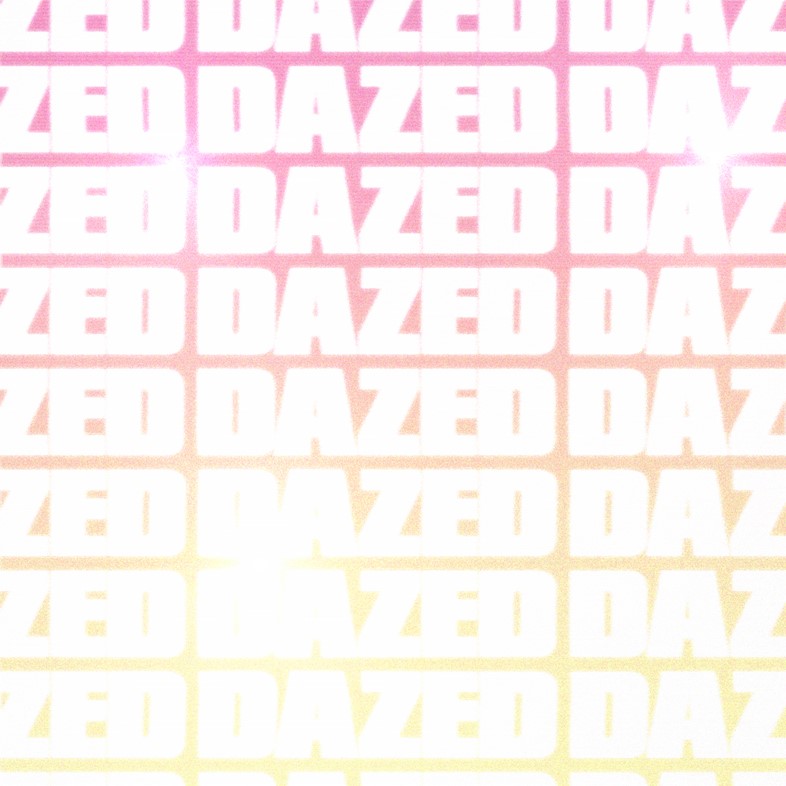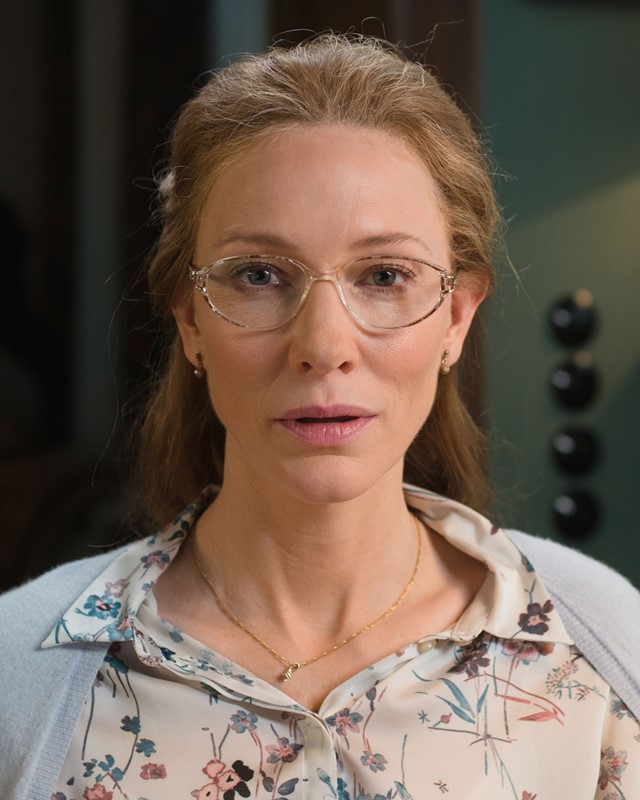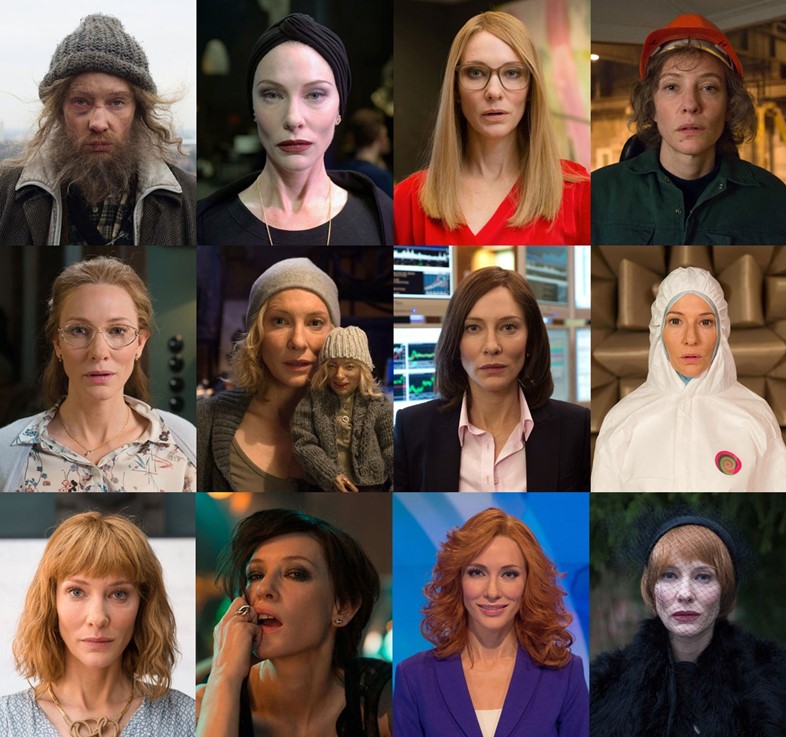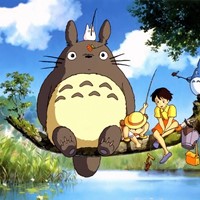Artist Julian Rosefeldt enlists the actress to reinterpret the most famous art manifestos of the 20th century – from Lars Von Trier to constructivism
Update October 2017: Tate Modern will host a special live streaming and event for Manifesto on 15 November
Whether it's Karl Marx's prescient writings on communism or Guy Debord's poetic take on the Situationists, manifestos tend to contain explosive calls to action that jump off the page – they practically demand that you lead the Next Great Revolution. But in Berlin artist Julian Rosefeldt's meticulously choreographed film installation Manifesto, the bombardment of rebellious remarks thrown at gallerygoers doesn't inspire radical upheaval so much as it leaves us unsettled, pensive and amused.
With Cate Blanchett as his wildly chameleonic partner-in-crime, Rosefeldt’s 13-channel video installation, on display until 10 July at Berlin’s Hamburger Bahnhof, takes some of the most trailblazing art manifestos of the 20th century out of their original contexts – think Fluxus, surrealism and constructivism, but also the writings of architects and filmmakers like Lars von Trier and Werner Herzog. Manifesto gives these avant-garde, anti-establishment affirmations new meaning, by having female characters reenact them in a stock exchange hall, a garish TV studio and a number of contemporary contexts.
Whether she’s nailing the part of a self-righteous Russian choreographer or a homeless, hirsute man with a megaphone, the marvelously versatile Blanchett brings Rosefeldt’s collaged manifestos to life, often resulting in absurd juxtapositions and playful jabs at our ‘Society of the Spectacle.’ We spoke with Rosefeldt on the fateful day of the Brexit referendum about our collective responsibility to trust artists, the eerie prescience of these manifestos and his humble contribution to dismantling the art-bro status quo.
Most of the manifestos you include were penned by defiant young men. Would you say the writings were a rite of passage for these artists?
Julian Rosefeldt: These manifestos were written at a time when the work these artists became famous for didn’t even exist yet. You could even say they were written in their late adolescence, as they’d just moved away from their parents’ house. When you’re in that moment of your life, you’re an angry young person. You want to break away from your father’s generation, you want to define yourself in opposition, and you tend to do things in an exaggerated manner. Whatever your way of protesting may be, it’s the time in your life where you clearly have a statement to make.
Would it be more difficult for fledgling artists today to make such bold declarations?
Julian Rosefeldt: Keep in mind that we now have a massive global art scene with sophisticated means of communication. In such a world, it’s difficult to provoke, because you’re free to say whatever you want to say, at least in the Western context. Back then, the entire global art scene was probably as big as Berlin’s current art scene. Within that realm, it was a very small fraction of people that were going against the prevailing art tendencies. Those manifesto writers were all part of a tiny minority of avant-garde artists. They screamed as loudly as they had to in order to express what they wanted to get off their chests.
“Nowadays, everything has been put down already, so it’s hard to spark a real provocation” – Julian Rosefeldt
In one of the films, Cate Blanchett’s homeless character quotes the following from visionary Dutch painter and Situationist Constant Nieuwenhuys: “In this period of change, the role of the artist can only be that of the revolutionary.” Would you tend to agree?
Julian Rosefeldt: I guess it’s about how you define a revolution, right? Nowadays, it might not be to run through the streets of Paris with a flaming torch, because you have many other ways of expressing yourself. You can become a hacker, for instance – Edward Snowden is a revolutionary. I believe artists have a voice and should take risks, but not necessarily to act out clichés or be modern-day Jeanne d’Arc. Artists, philosophers and scientists have a great privilege, which is to speak out and say things that haven’t yet been proven.
Each character played by Cate Blanchett delivers the manifesto fragments with utmost conviction. Do you think the passion contained in these artists’ writings resonates just as strongly today?
Julian Rosefeldt: Maybe even more. The beautiful discovery I made while working on these manifestos was that these artists had been seismographers and visionaries of their time, making prophetic readings on their societies. So much in their texts remains absolutely relevant; it’s really shocking. For instance, in the short featuring Cate as the homeless man, I included quotes from the John Reed Club of New York, whose ‘Draft Manifesto’ reads as though it had been written yesterday, even though it’s from 1932! It’s a perfect critique of the crisis of capitalism. It even anticipates globalisation and talks about rising insecurities and wars in the Middle East… You read the text and think, this can’t be, it’s from 1932!

Perhaps there’s a lesson in there about trusting artists, especially at a time when so many loudmouth political leaders hijack our collective attention with mindless rhetoric?
Julian Rosefeldt: Absolutely. And it’s not just Donald Trump. Look at what’s going here in Germany with all this Pegida neo-fascist, populist bullshit, Farage in the U.K., and the ultra-right parties in Scandinavia and the Netherlands. It’s very frightening. Somehow, it’s okay now to say certain things in the streets of Germany that I couldn’t have dreamt about 10 years ago. We have all this loud talking without any substance or intelligence, whereas the authors of those manifestos were all similarly loud and angry, but also brilliantly sharp, intelligent and very poetic. Hopefully, Manifesto can remind people that if you want to say something, you should make sure it’s sharp and intelligent before you open your mouth.
Do these troubled geopolitical times call for new artistic manifestos?
Julian Rosefeldt: There are manifestos written nowadays, but they’re mostly social, political, economic statements and analyses. Artists don’t write manifestos nowadays because their tone is a bit obsolete – this whole subtext of ‘down with…’ and ‘breaking with what has been’. Nowadays, everything has been put down already, so it’s hard to spark a real provocation. Probably the most provocative artist of our time is Russian artist Petr Pavlensky, who nailed his balls to the Red Square in Moscow. That’s real risk-taking; he’s putting his life on the line. But maybe that’s romantic thinking or an antiquated form of protest in a contemporary society where you can have more of an impact by being a heckler.
“Hopefully, Manifesto can remind people that if you want to say something, you should make sure it’s sharp and intelligent before you open your mouth” – Julian Rosefeldt
That being said, the astute Instagram response to your installation – people posting quotes from Manifesto – tells me these texts are really striking a chord.
Julian Rosefeldt: I totally agree. My friends showed me those quotes. It makes me very happy, because that means those texts are now back in circulation. That was a big discovery for me, too. I had of course heard about most of these manifestos and had read parts of Dada, Fluxus and the Futurists, but finding out that all of these fantastic artists were also brilliant thinkers and writers was a great discovery.
Beyond the obvious reasons for casting Cate Blanchett (e.g., finding someone who could effortlessly flip from foul-mouthed Tea Party mom to contemptible rock star), did you intentionally seek out a household name for this project?
Julian Rosefeldt: Not really. The simple answer is that we were introduced by a mutual friend a few years ago, started talking and the idea came up of doing something together. This was completely overwhelming and fantastic for me because I have admired her acting for a long time. It was specifically conceived for her, to have her play multiple characters. She is one of these amazingly instinctive actresses with an unbounded curiosity in the human condition, and she never stops researching. So I needed to provide something that she could really sink her teeth into! It was so fascinating to watch her disappear in each one of these characters because she’s so good at what she does.

Given how few of the manifestos were written by women, it’s also refreshing to find Cate reenact them, dismantling the art-bro domination.
Julian Rosefeldt: Definitely. I initially came across these artistic manifestos while doing research for my film Deep Gold, which is an homage to Luis Buñuel’s second film, The Golden Age. I discovered two texts from the French futurist Valentine de Saint-Point, but on the whole what shocked me about these fascinating artist manifestos was that they were largely written by men. This has to do with the fact that the 20th century was a very male-dominated one. So when I decided to do Manifesto with Cate, I thought it would be great to counterbalance the male energies from the texts with a female protagonist, giving them a completely different connotation. It helps free the original texts from the dustbin of art history.
Lastly, I have to ask about the film-themed segment set in an elementary school, where Cate plays a teacher informing her pupils that “nothing is original” and “it’s not where you take things from, it’s where you take them to.” She’s quoting from Herzog, von Trier and Jim Jarmusch’s Golden Rules of Filmmaking (2004) –by far the most recent manifestos you included in the project. Did these hold any particular significance for you?
Julian Rosefeldt: Very much. I just love Jarmusch’s text. It’s what I would love to tell my children every day. It has this humour but also this optimism, which I think is both helpful and necessary towards the end, after you’ve been bombarded by all these ‘down with’ manifestos, to see these children who might become future brokers or artists. I also included quotes from an American architect and visionary named Lebbeus Woods, who had this very sci-fi-driven, utopian architectural fantasy. His text is kind of the epilogue of that scene when Cate says: “tomorrow we begin together the construction of a new city.” She’s certainly not talking about the city as architecture, but rather about a new architecture of ideas. The children in her classroom will probably be the architects of that city.
"Manifesto" is on display until 10 July at Berlin’s Hamburger Bahnhof




